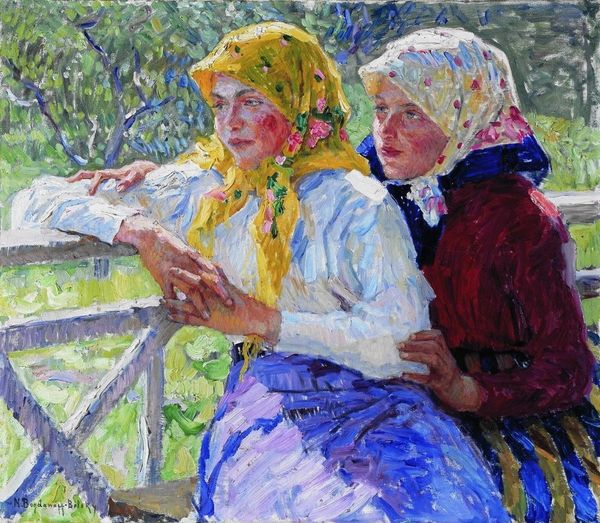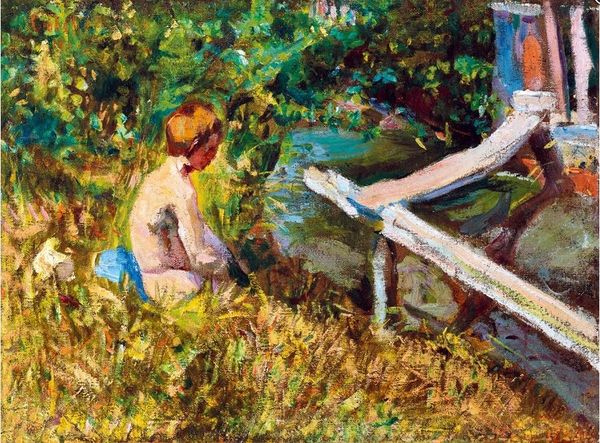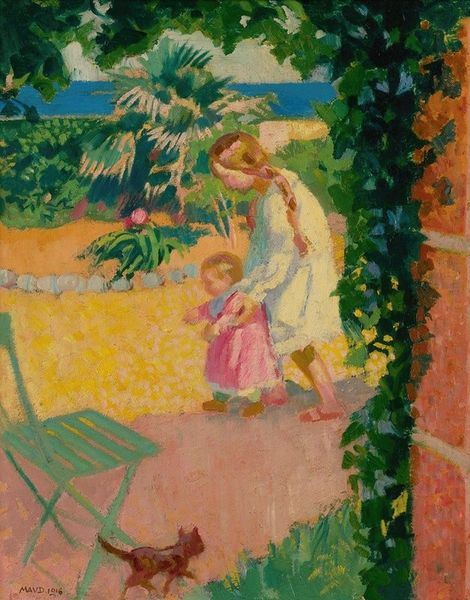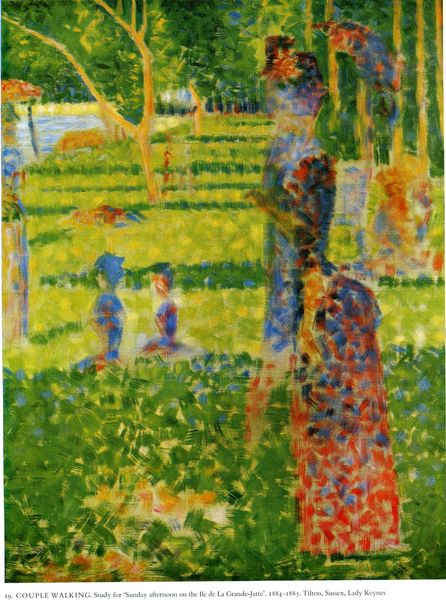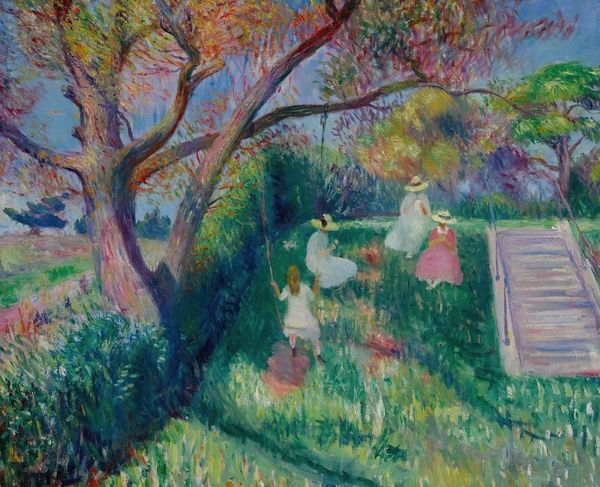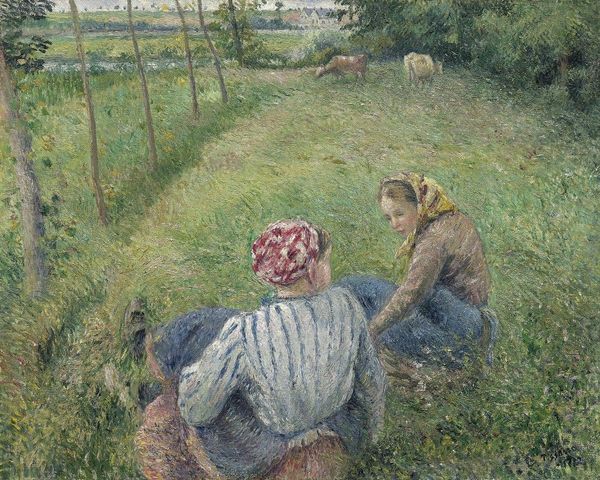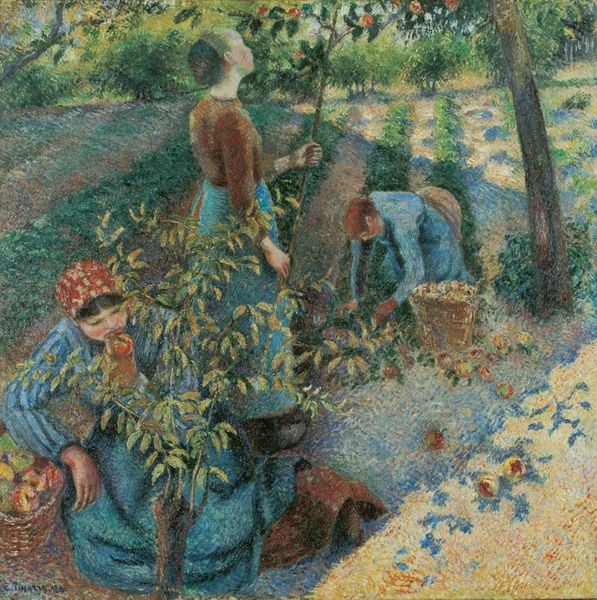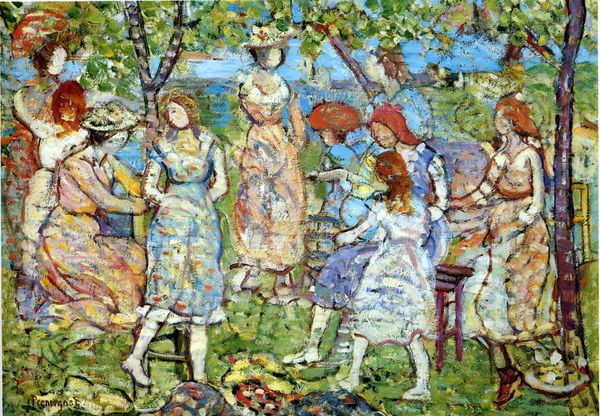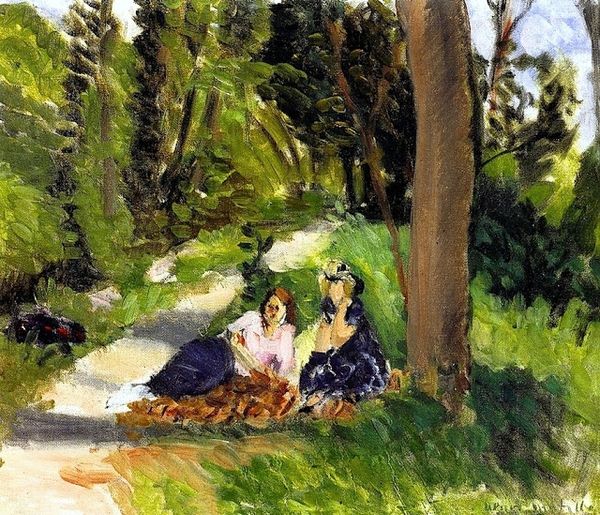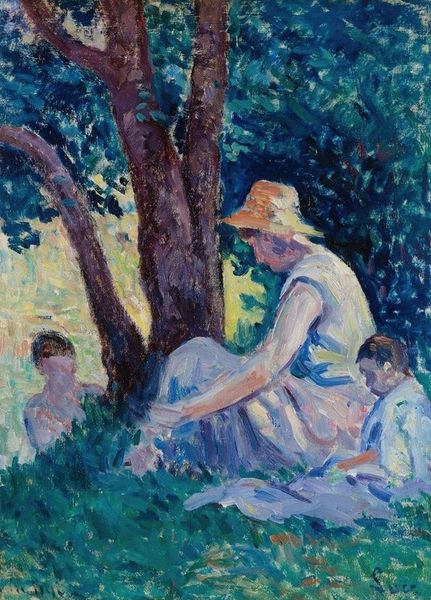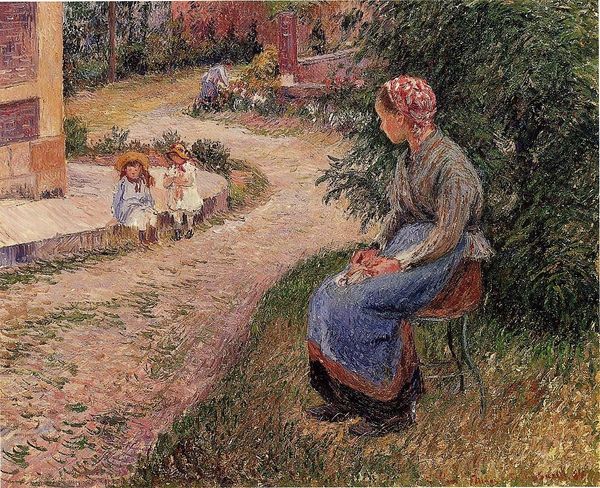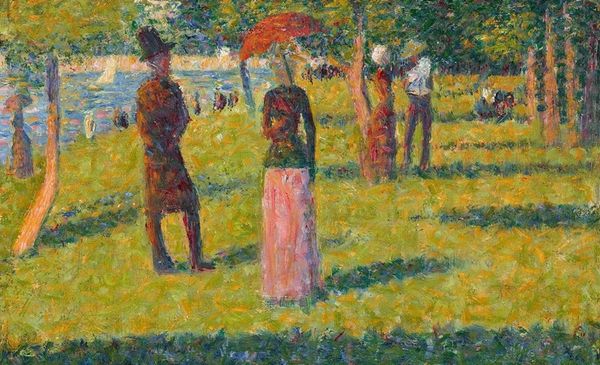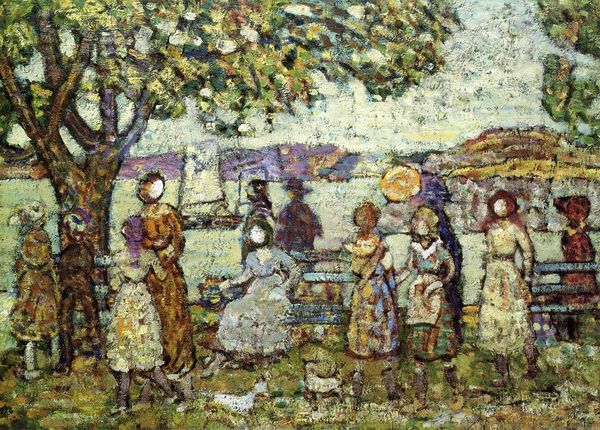
Copyright: Public domain
Editor: Here we have Nikolay Bogdanov-Belsky's "Girls in Kerchiefs" from 1920, rendered in oil paint. It gives me a sense of warmth, capturing a moment of quiet concentration amidst a lush, green landscape. What strikes you most about this painting? Curator: For me, it is the socio-political undercurrent that resonates. This painting presents a seemingly idyllic scene, but if we examine it through the lens of early 20th century Russia, particularly in the wake of the revolution, we see it can be a statement about the changing roles of women and access to education for all, regardless of social status. The girls reading become symbols of empowerment. Does that change how you perceive their expressions? Editor: I see what you mean. Their intent gazes gain a new weight. The kerchiefs, though traditionally associated with peasant life, now appear almost like badges of a quiet revolution, a striving for knowledge. Curator: Exactly! And Bogdanov-Belsky himself rose from peasant origins, so his work often reflected this upward mobility through education. Consider how the “plein air” style – painting outdoors - breaks from academic conventions, further democratizing art. It makes me wonder, what narrative do you think they’re immersed in? What kind of world are they being exposed to? Editor: I imagine a story that broadens their horizons, inspiring dreams beyond the confines of their rural existence. Perhaps they’re discovering shared struggles and triumphs from women in other countries, throughout other times. Curator: It really emphasizes the importance of not taking seemingly simple, bucolic images at face value, don't you think? Editor: I definitely agree! Seeing it through that lens has opened up a completely new understanding of this painting for me. Curator: And for me as well, speaking to younger, enthusiastic scholars such as yourself always broadens my viewpoint as well.
Comments
No comments
Be the first to comment and join the conversation on the ultimate creative platform.
